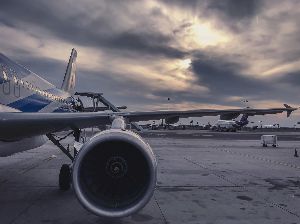Interstate Domestic Air Freight
Fast, secure and dependable air cargo across Australia
How to Calculate True Cost of Delay in Mining, Energy, and MRO

Author : Tyson Shipp
Domestic Air Freight Specialist contributing to hhiexpo.com.au. Tyson writes practical editorial insights to help Australian businesses move urgent shipments safely and on time across interstate air routes.
Executives who work outside heavy industry tend to underestimate the cost of time. But in mining, energy, marine engineering, and aerospace maintenance, an hour of delay is not “lost time.” It is lost production, and production is the direct conversion of capital into revenue.
This is why analysts in these sectors model performance in terms of throughput velocity, uptime percentage, cycle time reliability, and utilisation of high-value assets. When you understand that frame, interstate domestic air freight stops looking expensive and starts looking like a tool to protect return on capital.
The formula for true cost of delay has three inputs:
one — the revenue per operating hour of the asset
A shutdown on a longwall coal face has a different economics profile from a shutdown on a gas turbine, or an offshore vessel waiting to depart in a tidal window.
two — the cost of capital associated with the asset
An idle autonomous haul truck in the Pilbara is not the same as an idle manual forklift in a warehouse. Asset scale matters.
three — the time penalty multiplier for missing the window
Some production losses are linear. Others are non-linear. In some sectors, missing an operating window doesn’t cost one hour. It costs one day.
When analysts take those three signals and build delay models properly, the conclusion is always the same:
The air bill is small. The delay cost is massive.
In real MRO practice, a single missing component can stall a maintenance bay that is scheduled months in advance. In LNG, a missed timing window can cascade into a charter demurrage fee. In mining, an idle shovel or processing plant can erase seven figures in a few shifts.
This is why real operators don’t calculate freight based on carrier tariff sheets. They calculate freight based on the value of defending continuity.
The smartest companies in Australia know the number that matters is the cost per hour of no output. That is the baseline. That is the guardrail. And that is what determines whether air uplift is expensive or cheap.








